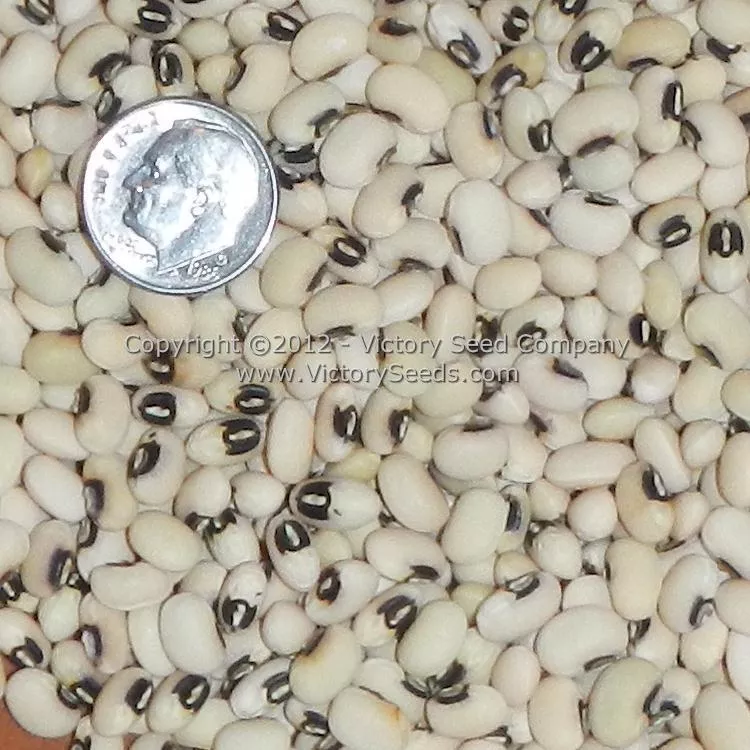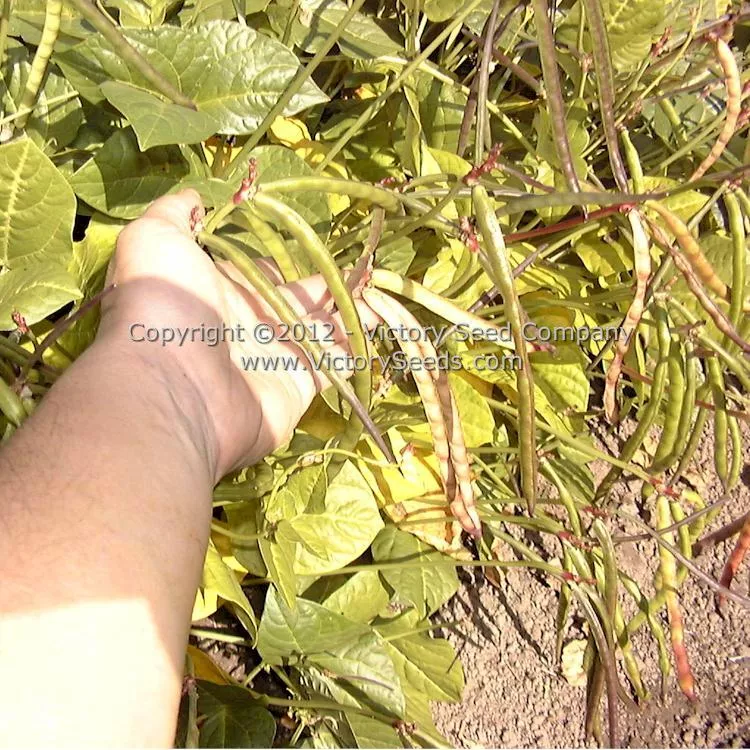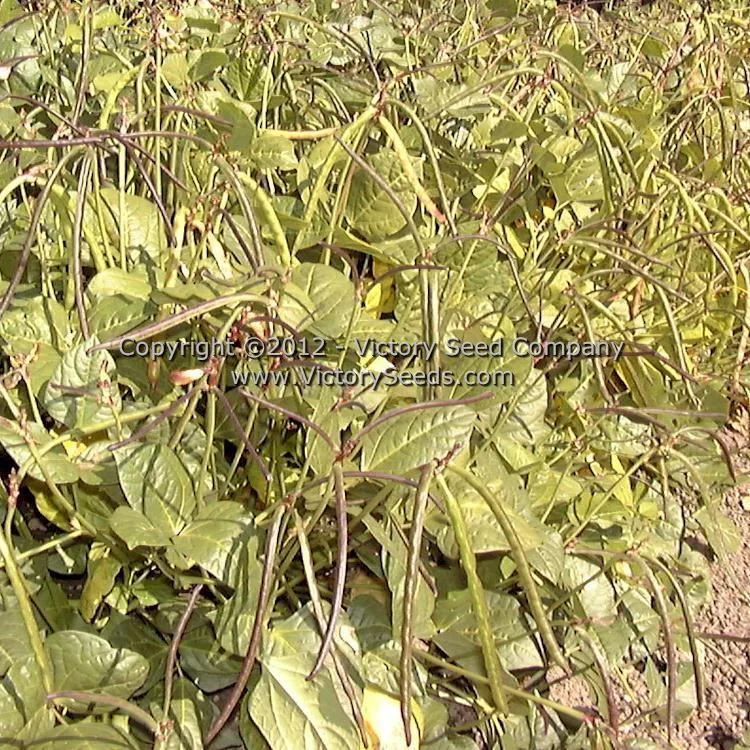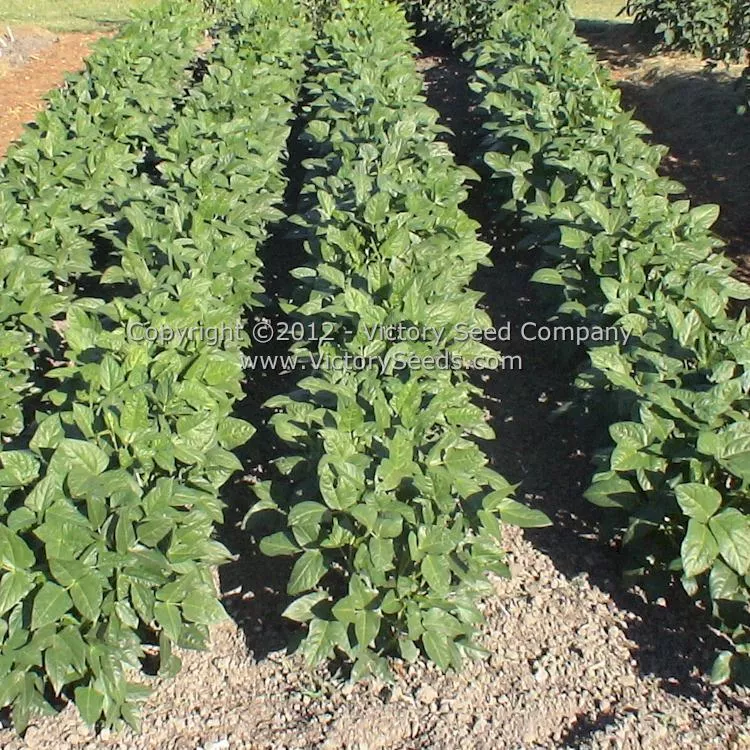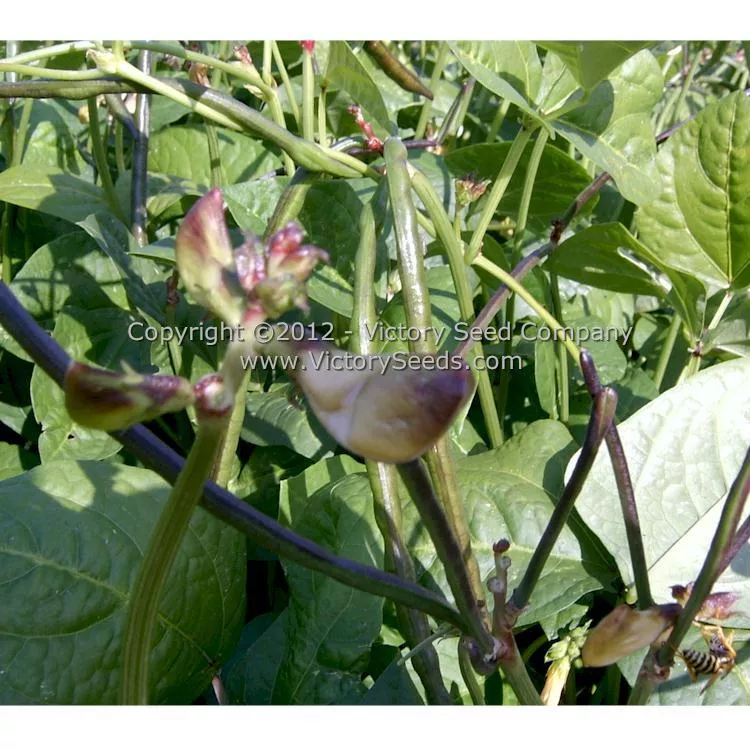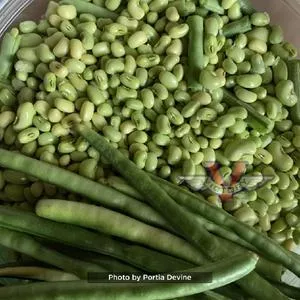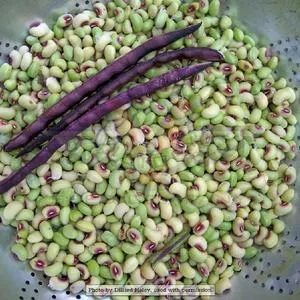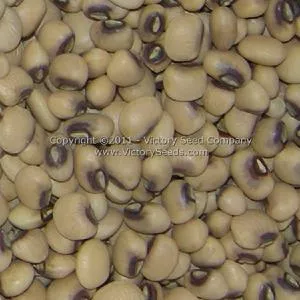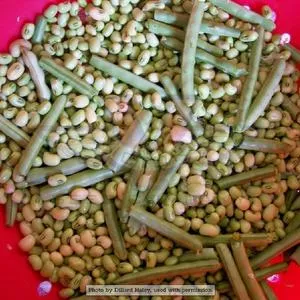




Fagiolino Dolico di Veneto Cowpea
Price: $4.45
SKU: 33008911The pods mature upright like "antlers" and are consistently about seven inches long with twelve to thirteen seeds each. The plants are erect, bush-like, and dwarf in habit with dark green foliage and beautiful blossoms. Because of its growing habit, the fact that it doesn't sprawl, it is a good choice for folks with limited gardening space. It is also very easy to pick. The seeds are white with black hilum (eye).
The young shoots or immature pods can be used like string beans, or allowed to mature to dry and shell and used like common cowpeas. Some describe the flavor as sweet and nutty or earthy, often likening the taste to mushrooms. In Italy, they are often cooked with mushrooms.
This heirloom cowpea's exact origin is clouded in history. Cowpeas (also known as Southern Peas here in the United States) trace their origins to sub-Saharan Africa. Most of the cowpea varieties that we are familiar with came to the "New World" from Africa via the slave trade. 'Fagiolino Dolico di Veneto' (or Fagiolo Dall'occhio di Veneto), which translates to the "Cowpea of Veneto," comes to us from the Italian region of Veneto where it has been grown for centuries.
We received a sample of seeds in 2004 from a seed saver in New Jersey (NJ KE P) who reported how well they perform in the North and wrote, "I have found them to be very disease and insect resistant, delicious raw or cooked when picked very slim." This intrigued us as we typically have great difficulty maturing cowpeas in our location. And she was right! They do great here - 70 days to green stage, 85 days to shelling pea stage and about 100 days to dry stage. I also had David Pendergrass grow them out in Tennessee and he reported that they thrived there as well.
Customer Reviews:
By Tamera Dickerson on April 10, 2016
I got a couple of packets of these cowpeas three or four years ago. I planted a half row, and got some for eating plus, saved a lot for replanting. The following year I planted a whole 50 foot row, and got tons. Last year I did three rows, cause these peas are wonderful. I have given some of them to friends to try, and still have lots to go again this year. They have done well with little water, abundant water and somewhere in the middle. When they start coming in, they have skinny green pods that you can use as green snap beans. A bit later they fill out and you can shell them like peas. Or you can let them dry on the vines and have dried beans ready to store. I have noticed if you keep them picked when they get fat and start to turn lighter colored, they keep producing ... all the way until frost. I usually leave the last of them on the vines to dry, but during the picking season, I am always finding ones that I previously missed that are dried as well. The vines stand up pretty well, and I have never had a need to prop them up. I plant double rows, with about 6 inches between the rows, so they fall together and support each other. I have frozen them, canned them, stored them as dried, and regardless of what I do to them, they are wonderful. I even found a recipe for Cowpeas and Sausage Stew ... it's awesome. I can't imagine anyone not being happy with these peas! Thanks Victory for bringing them around again!

